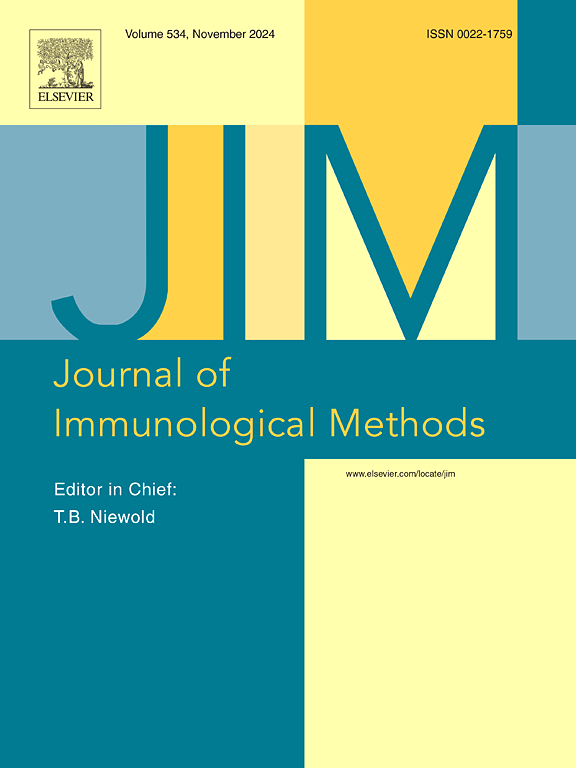Antibodies against chikungunya virus structural proteins reveal the presence of CHIKV virions in migrasomes
IF 1.6
4区 医学
Q4 BIOCHEMICAL RESEARCH METHODS
引用次数: 0
Abstract
Chikungunya fever (CHIKF) is a viral illness transmitted by mosquitoes, caused by the chikungunya virus (CHIKV), which has led to millions of infections globally. Antibodies against CHIKV serve as essential tools for research on this virus. In this study, we designed peptides corresponding to the E1, E2, E3, and capsid proteins of CHIKV to immunize New Zealand white rabbits, leading to the development of polyclonal antibodies. We characterized these antibodies through Western blot and immunofluorescence assays. Importantly, our findings using these antibodies revealed the localization of CHIKV structural proteins within migrasomes, thereby uncovering the presence of CHIKV virions in migrasomes, as confirmed by transmission electron microscopy (TEM). The antibodies generated in this study will provide a valuable resource for future investigations into CHIKV.
针对基孔肯雅病毒结构蛋白的抗体揭示了迁移体中存在基孔肯雅病毒粒子
基孔肯雅热(CHIKF)是一种由蚊子传播的病毒性疾病,由基孔肯雅病毒(CHIKV)引起,已导致全球数百万人感染。抗CHIKV抗体是研究该病毒的重要工具。本研究设计了CHIKV的E1、E2、E3和衣壳蛋白对应的肽段,免疫新西兰大白兔,制备多克隆抗体。我们通过Western blot和免疫荧光分析鉴定了这些抗体。重要的是,我们使用这些抗体的发现揭示了偏头痛小体中CHIKV结构蛋白的定位,从而揭示了偏头痛小体中CHIKV病毒粒子的存在,这一点得到了透射电子显微镜(TEM)的证实。本研究产生的抗体将为今后对CHIKV的研究提供宝贵的资源。
本文章由计算机程序翻译,如有差异,请以英文原文为准。
求助全文
约1分钟内获得全文
求助全文
来源期刊
CiteScore
4.10
自引率
0.00%
发文量
120
审稿时长
3 months
期刊介绍:
The Journal of Immunological Methods is devoted to covering techniques for: (1) Quantitating and detecting antibodies and/or antigens. (2) Purifying immunoglobulins, lymphokines and other molecules of the immune system. (3) Isolating antigens and other substances important in immunological processes. (4) Labelling antigens and antibodies. (5) Localizing antigens and/or antibodies in tissues and cells. (6) Detecting, and fractionating immunocompetent cells. (7) Assaying for cellular immunity. (8) Documenting cell-cell interactions. (9) Initiating immunity and unresponsiveness. (10) Transplanting tissues. (11) Studying items closely related to immunity such as complement, reticuloendothelial system and others. (12) Molecular techniques for studying immune cells and their receptors. (13) Imaging of the immune system. (14) Methods for production or their fragments in eukaryotic and prokaryotic cells.
In addition the journal will publish articles on novel methods for analysing the organization, structure and expression of genes for immunologically important molecules such as immunoglobulins, T cell receptors and accessory molecules involved in antigen recognition, processing and presentation. Submitted full length manuscripts should describe new methods of broad applicability to immunology and not simply the application of an established method to a particular substance - although papers describing such applications may be considered for publication as a short Technical Note. Review articles will also be published by the Journal of Immunological Methods. In general these manuscripts are by solicitation however anyone interested in submitting a review can contact the Reviews Editor and provide an outline of the proposed review.

 求助内容:
求助内容: 应助结果提醒方式:
应助结果提醒方式:


